The Anticipation: Loading the CineStill 800T
A film made for neon, waiting to be unleashed.
I loaded a roll of CineStill 800T into my camera knowing exactly what I was after: neon and halations. The kind of light that doesn’t just illuminate, but bleeds, glows, and lingers in the air.
Normally, this film has a Remjet layer, which prevents light from bouncing back into the emulsion and causing unwanted glow. But CineStill removes this layer, making the film compatible with standard C-41 processing. What is understood as an accident by purists, is to me, an opportunity to print a signature. I am talking about that glowing, dreamy red halation effect around bright highlights.
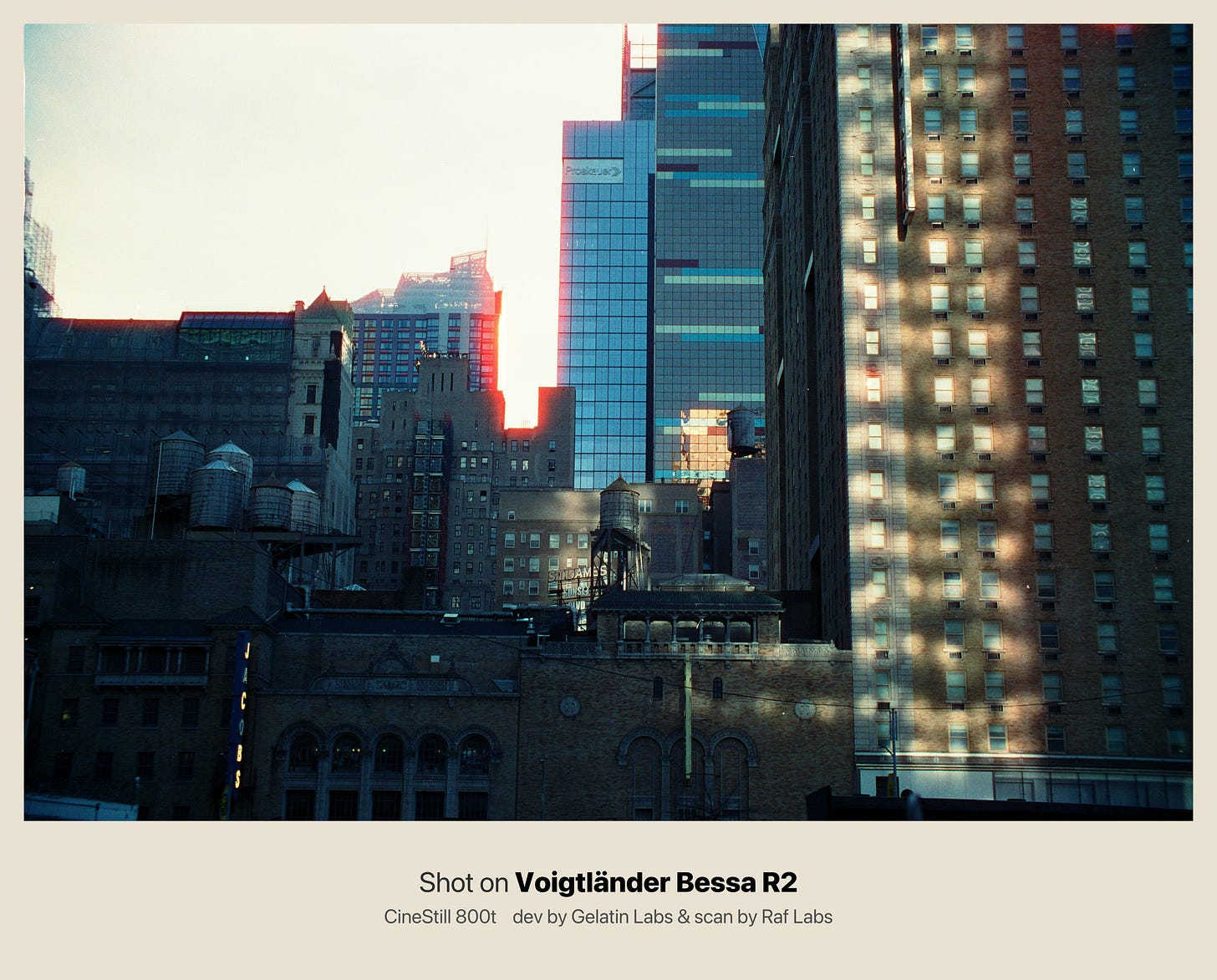
And that’s exactly what I had in mind: halation. A world where light behaves in ways digital cameras struggle to replicate. And if there’s anywhere that could push this film to its limits, it’s Times Square, so that's my destination for today.
Chasing the Light: From the Golden Hour to Night Glow
From the warmth of the Sun to the electric pulse of the city, the film truly takes over.
I arrived in the city just as golden hour approached. In the depths of winter in NY, the sun is fleeting, casting long shadows and warm hues that barely last before the city takes over with its artificial glow. I knew I had a small window where daylight was still present.
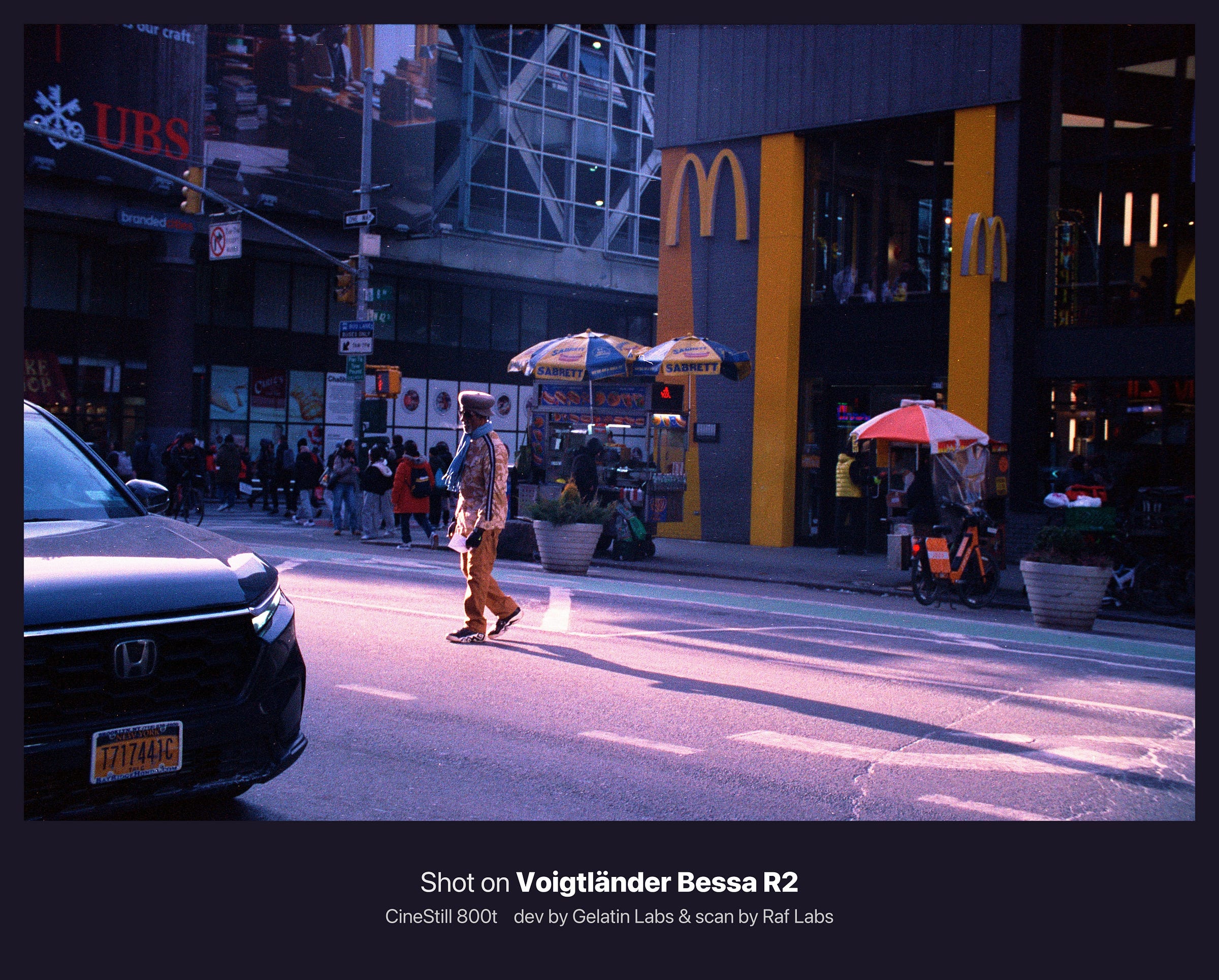
At first, I was just walking through Manhattan, bathed in the final remnants of the sun’s warmth. But as I moved closer to my destination, the shift was undeniable. The golden light faded, the deep blues took over, and suddenly, it felt like I had stepped into a different reality.
The city didn’t just light up, it transformed.
I somehow entered the Port Authority bus terminal before going to Times Square, and that’s when the Blade Runner machine kicked in. The fluorescent lights, the reflections, the halation creeping in around the brightest highlights: it was as if the film had been waiting for this moment.
I measured light for the midtones, balancing the scene instead of chasing extreme highlights or deep shadows. Had I metered differently, would the halation have reacted more aggressively? That’s a test for another day. But at that moment I didn't have too much experience with the film, so I shot at box speed and tried to do everything "by the book". The location had handed me its light, and the film was in command, so I operated like a pawn, a humble shutter button guy, downsized to my insignificance in front of a Queen.
Halation Nation: When Light Bleeds
Bright lights don’t just glow. They pulse, they breathe, they expand.
Shooting film means trusting the unseen. There’s no instant playback, no LCD screen to check, no immediate validation. The moment I pressed the shutter, the image disappeared into the unknown, sealed inside the emulsion until development.
But I knew what I was chasing, and my mission wasn’t complete yet…
As I walked through the city, I started seeing light differently, not just as highlights and shadows, but as something fluid, something alive. Where would the halation bloom? Which neon reflections would spill beyond their edges? How would the city’s artificial glow etch itself into the frame?
I imagined the red aura wrapping itself around streetlights, the way fluorescent fixtures would breathe into the darkness. The film wouldn’t just capture the light, it would transform it, reinterpret it, give it an afterglow.
And when I finally saw the results, they felt both familiar and unexpected. The halation had its own mind, it crept where it wanted, softened edges I hadn’t anticipated, and painted the city with a warmth that digital sensors would have sterilized. It was like dealing with something that had its own life, its own manners, its own behavior, something ungovernable.
The Actual Blade Runner Machine
A color palette that doesn’t belong to reality, but to a dream.
This tungsten-balanced film is designed for artificial lighting, but what makes it special is how it leans into those colors rather than neutralizing them.
Instead of trying to “fix” the color shift from neon signs and streetlights, the film embraces it. The greens turn deep and inky, the blues become cinematic, and the reds, especially in the halation, take on an almost surreal warmth.
Looking at my images, I feel like I had stumbled into a Cyberpunk film still. There was something unnatural about the tones, but that’s what made them so compelling.
The colors glowed like fluorescent veins running through the city’s skin. This wasn’t a film trying to replicate reality, it was a film designed to enhance it, to pull the city’s light into a dreamlike dimension where every frame felt like a scene from a world, just beyond our own.
The Film is Queen: it’s Not About the Camera
Whether you shoot with a Leica or a cheap point-and-shoot, the film is in charge.
One of the things I love about film photography is that the camera is just a black box letting light in. Unlike digital, where sensors, processing engines, and camera brands each impose their own unique signature, film dictates the final look, not the gear.
Whether you shoot a high-end Leica or a cheap point-and-shoot, this tungsten-balanced stock will still deliver the same halation, the same colors, the same cinematic magic. The glow, the atmosphere, they don’t care what camera you use. They exist within the emulsion itself.
That’s what makes this film special. It democratizes the aesthetic. Anyone can become a photographer with their own unique signature without needing to learn complex editing software, buy expensive presets, or invest in costly plugins. The beauty of this film is that it does the work for you. It brings a cinematic character straight out of the emulsion, allowing creativity to flow freely without the barriers of digital post-processing. You don’t need the latest mirrorless camera or a fancy lens, just a roll of film and any camera that can advance it.
Beyond Times Square: A Film Made for Neon Cities
Wherever neon dominates, this film thrives.
Times Square was just the beginning, as this film isn’t tied to one city: it’s made for anywhere artificial lights take over the night.
In fact, Times Square needs more of CineStill, than CineStill needs Times Square.
Las Vegas, Tokyo, Abu Dhabi, Hong Kong, Shanghai, Seoul, Bangkok, Dubai, Singapore, São Paulo, London, Berlin! The glowing casino signs, the flashing billboards, the plethora of glowing advertisements in Asia, from the street food places in Thailand to the illuminated skylines of Shanghai, the 7-Eleven stores in South Korea, thr rain-soaked streets reflecting light in unpredictable ways. This film thrives in these places, and it's one film to rule them all.
Looking at these images, I can’t help but wonder: what if I had metered for the shadows instead? What if I had pushed the film by one stop? Would the neon bleed even more? Would Times Square turn into a complete fever dream of halation? What if I bring a tripod and try long exposure? Yes! A tripod and a long exposure, oh my god.
Disclaimer
This post is not affiliated with or endorsed by CineStill. It is a personal reflection on the film’s technical and artistic qualities, written purely for creative and poetic exploration. Any references to CineStill 800T are based on personal experience and artistic interpretation, without any commercial intent.






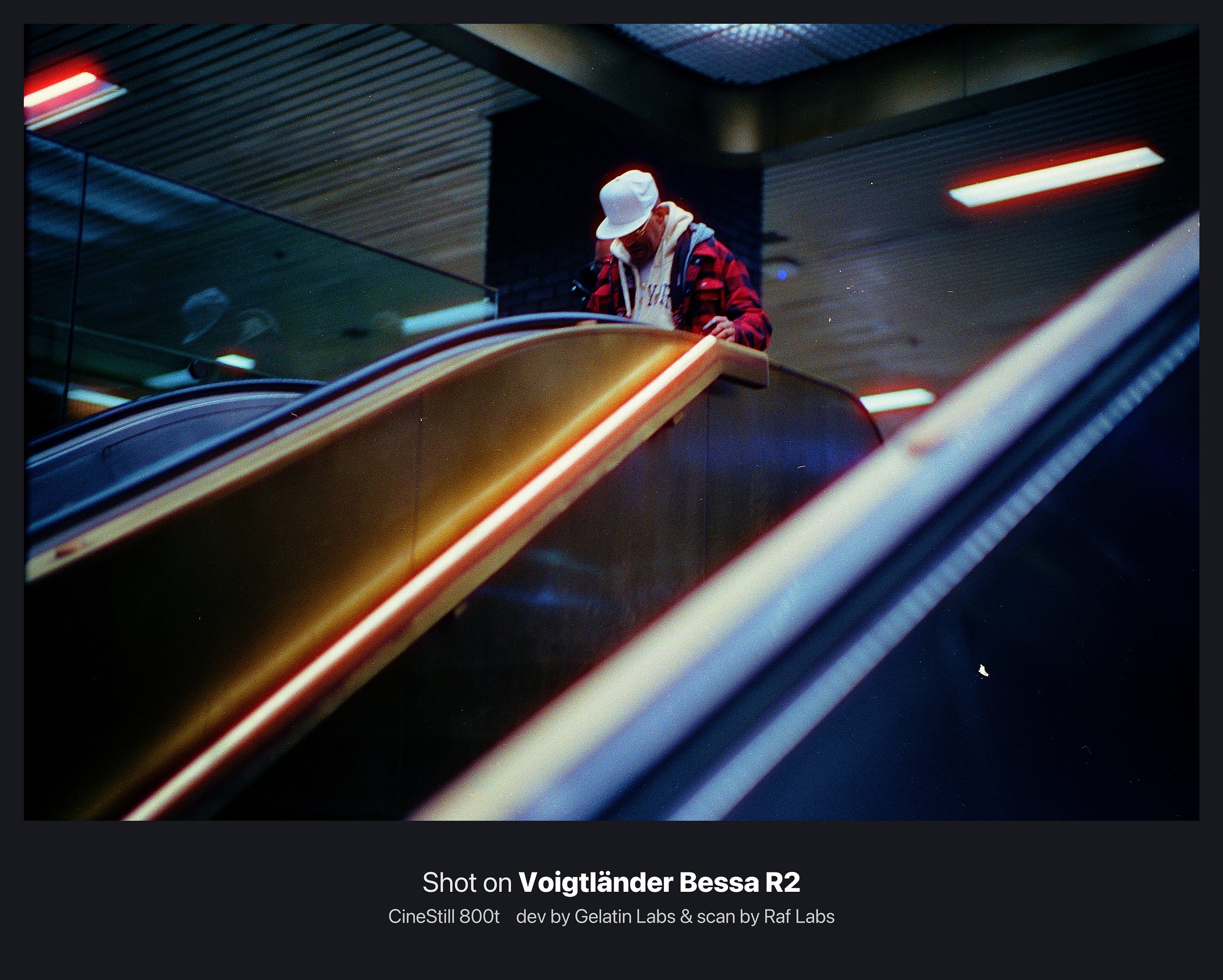
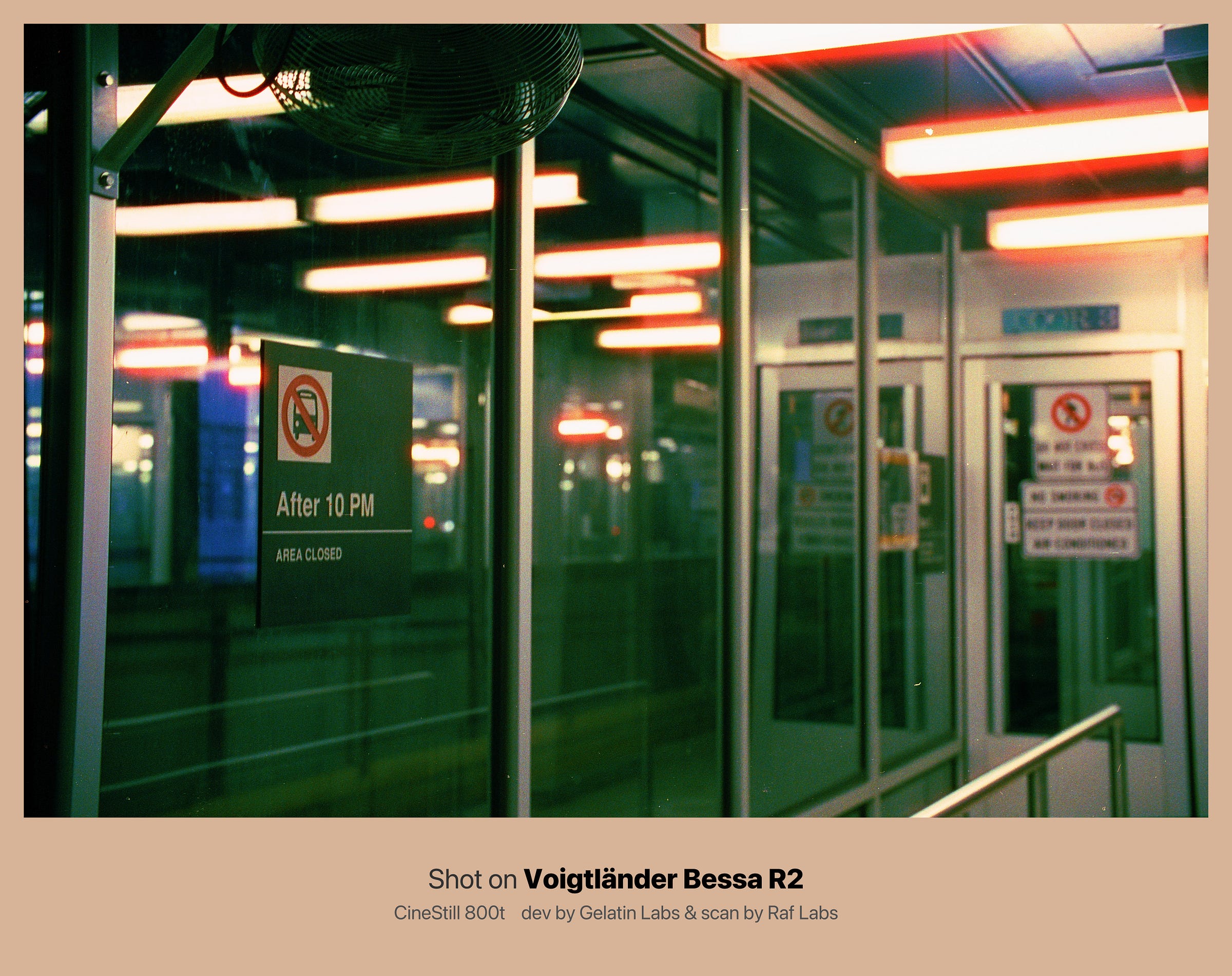
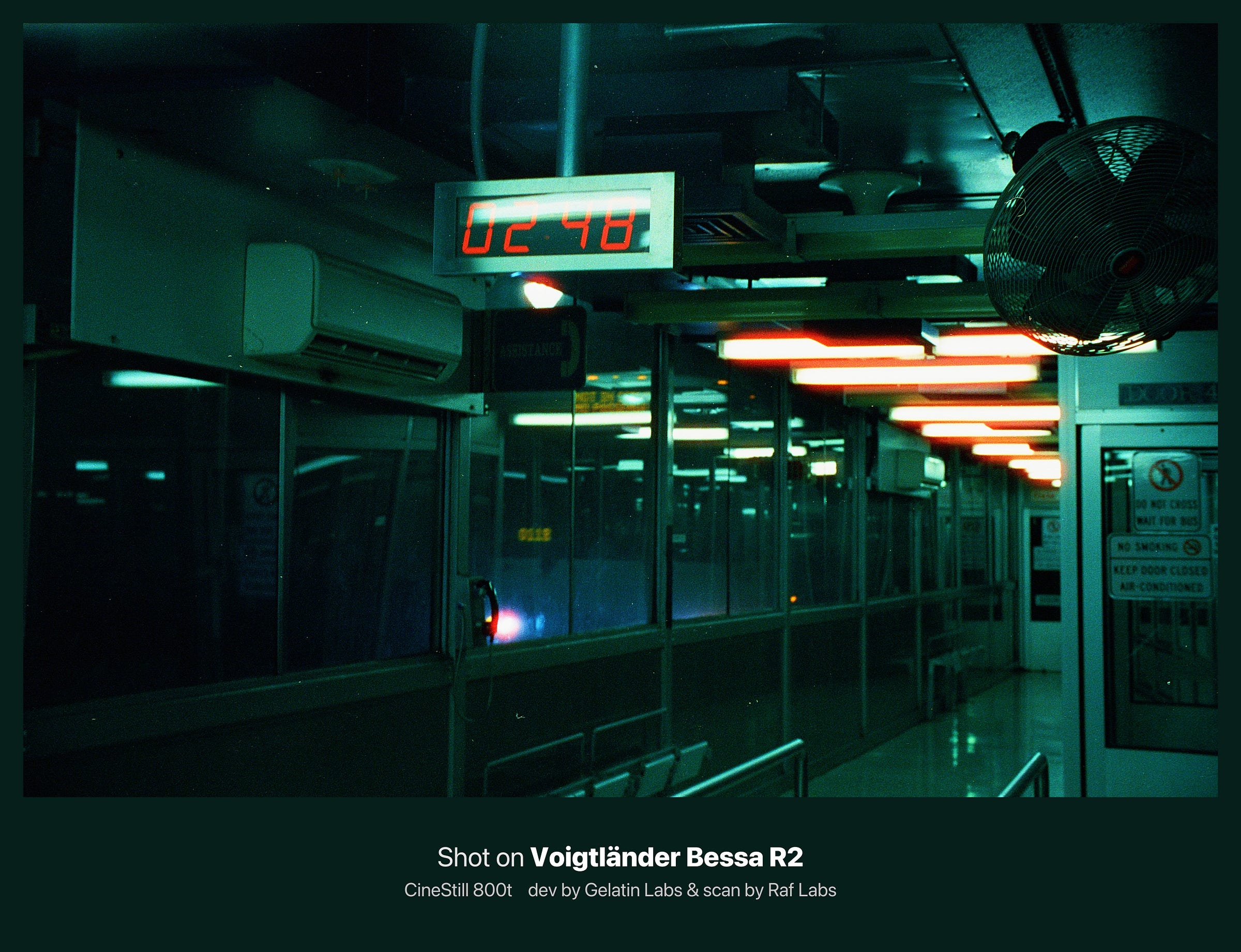
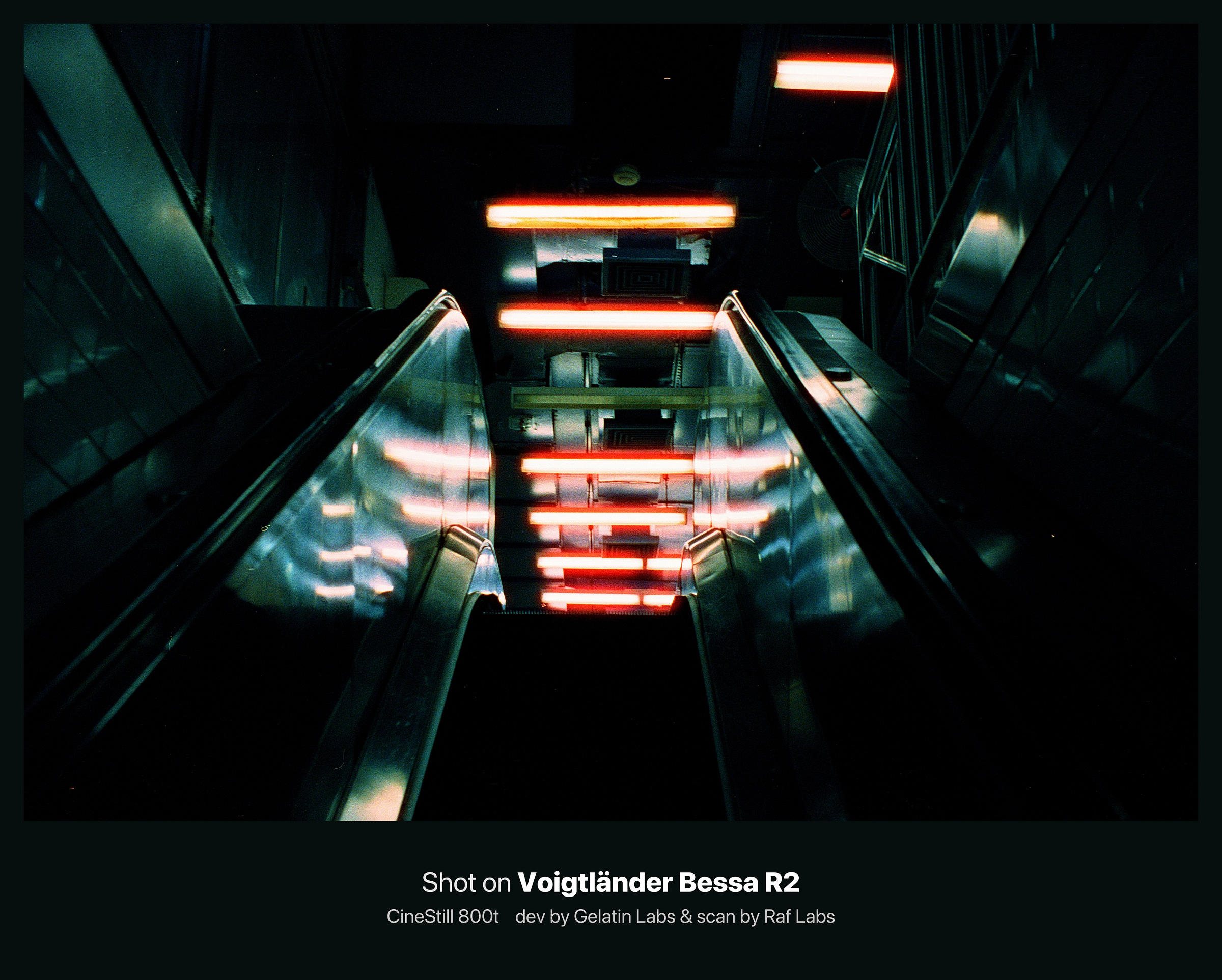
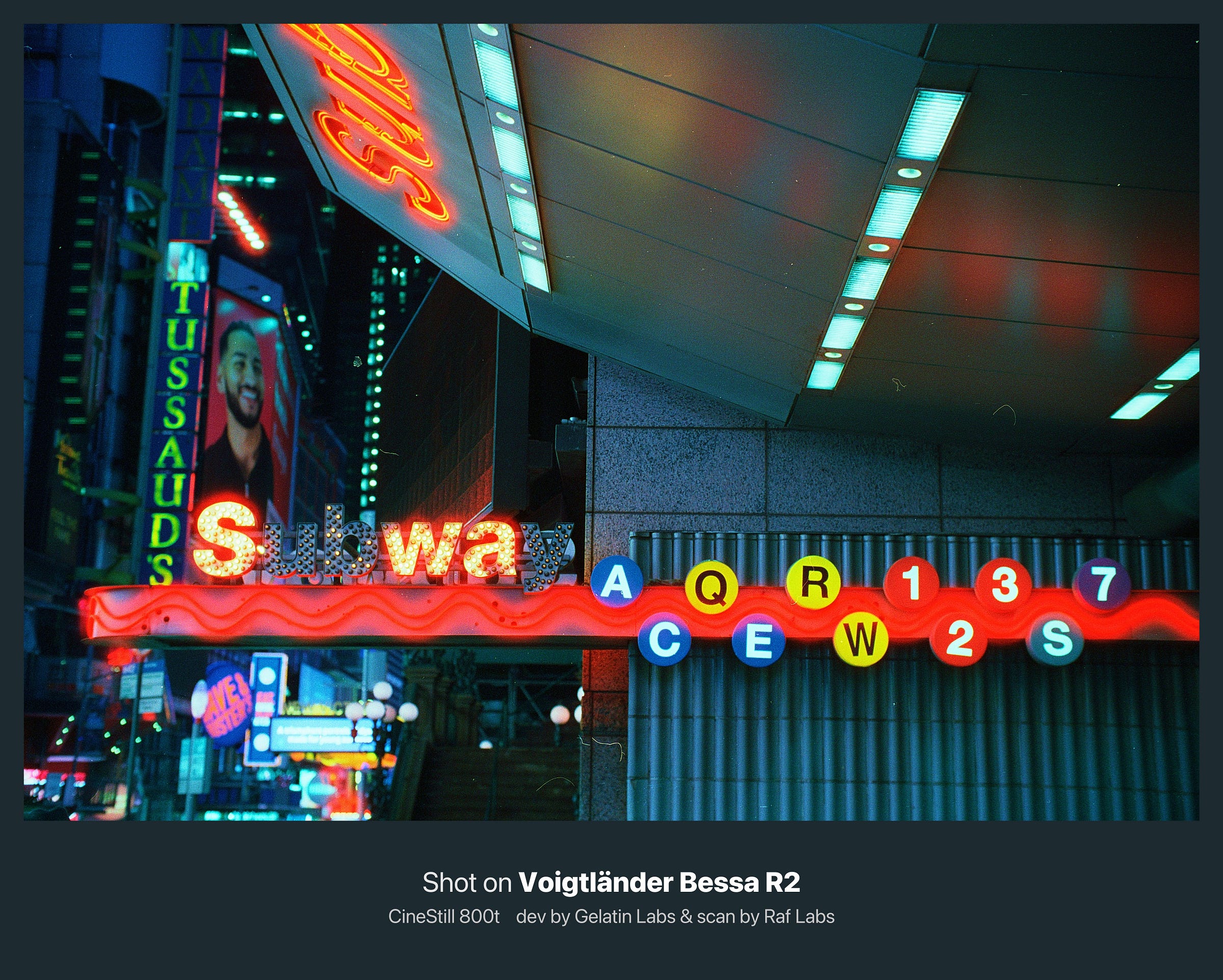
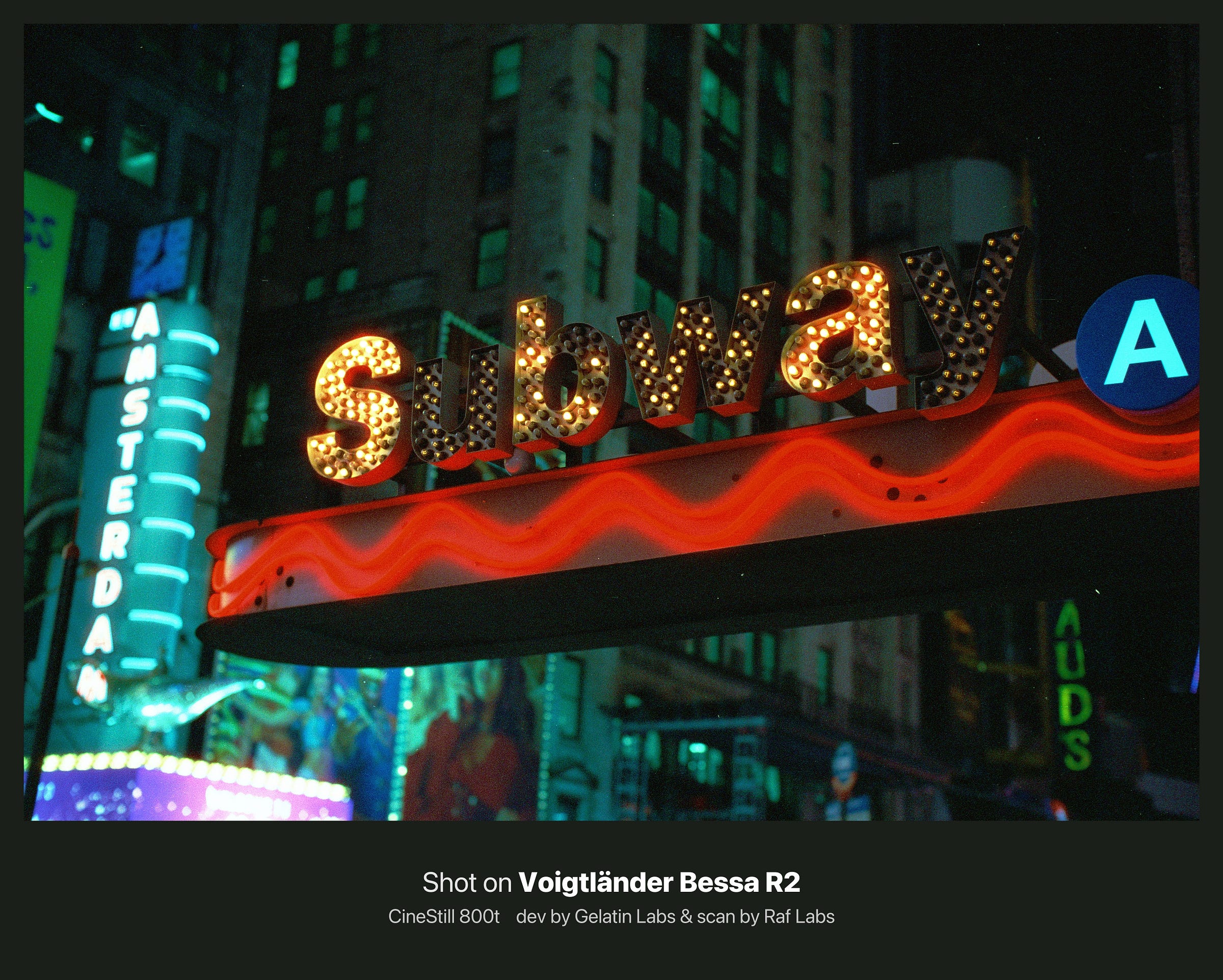
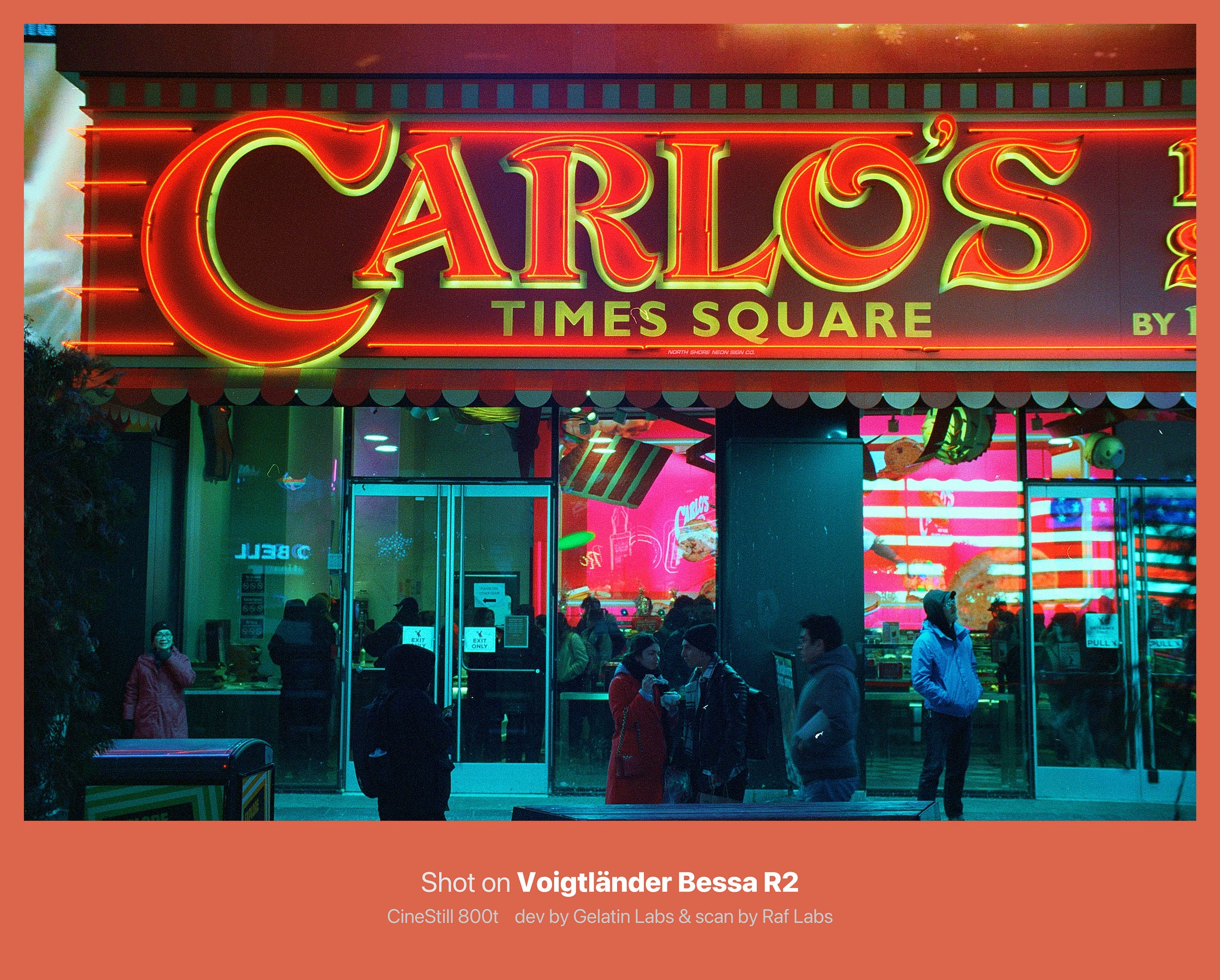
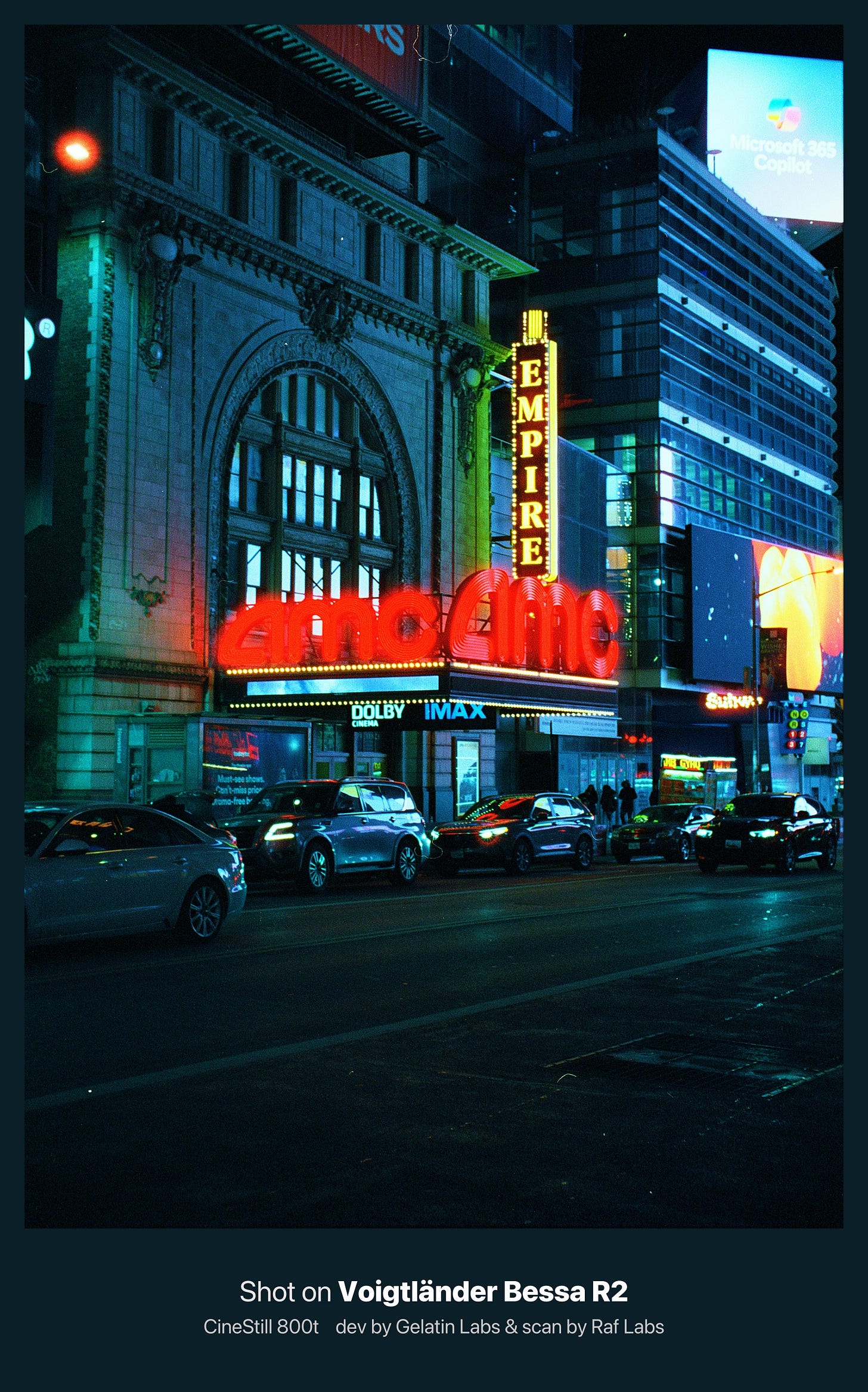
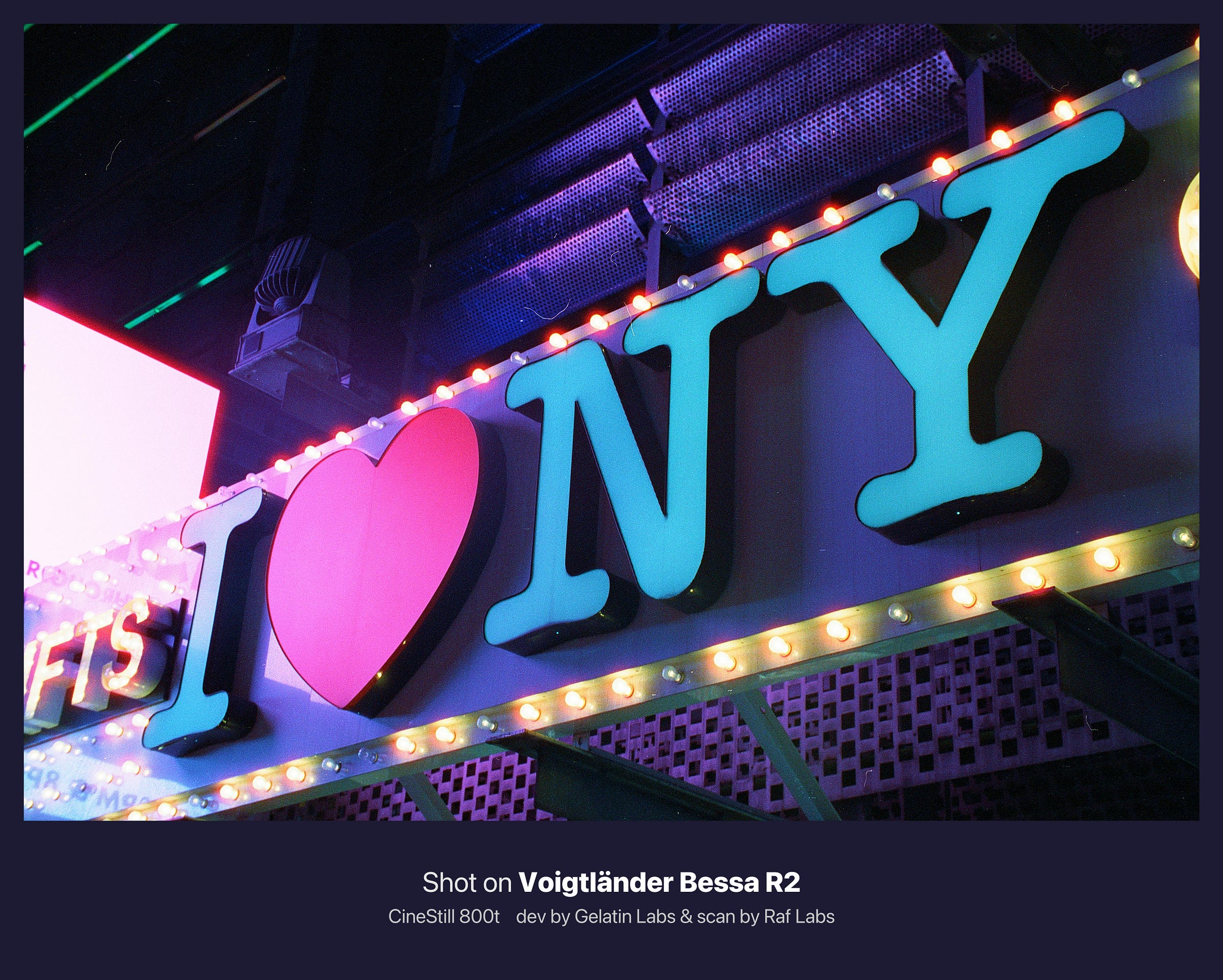


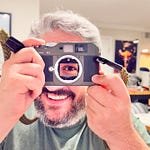

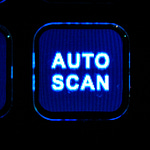
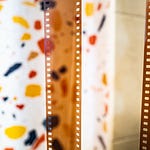
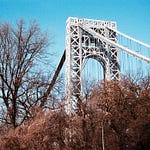
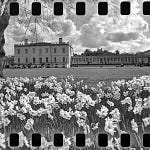
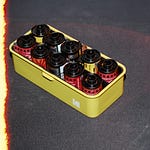
Share this post